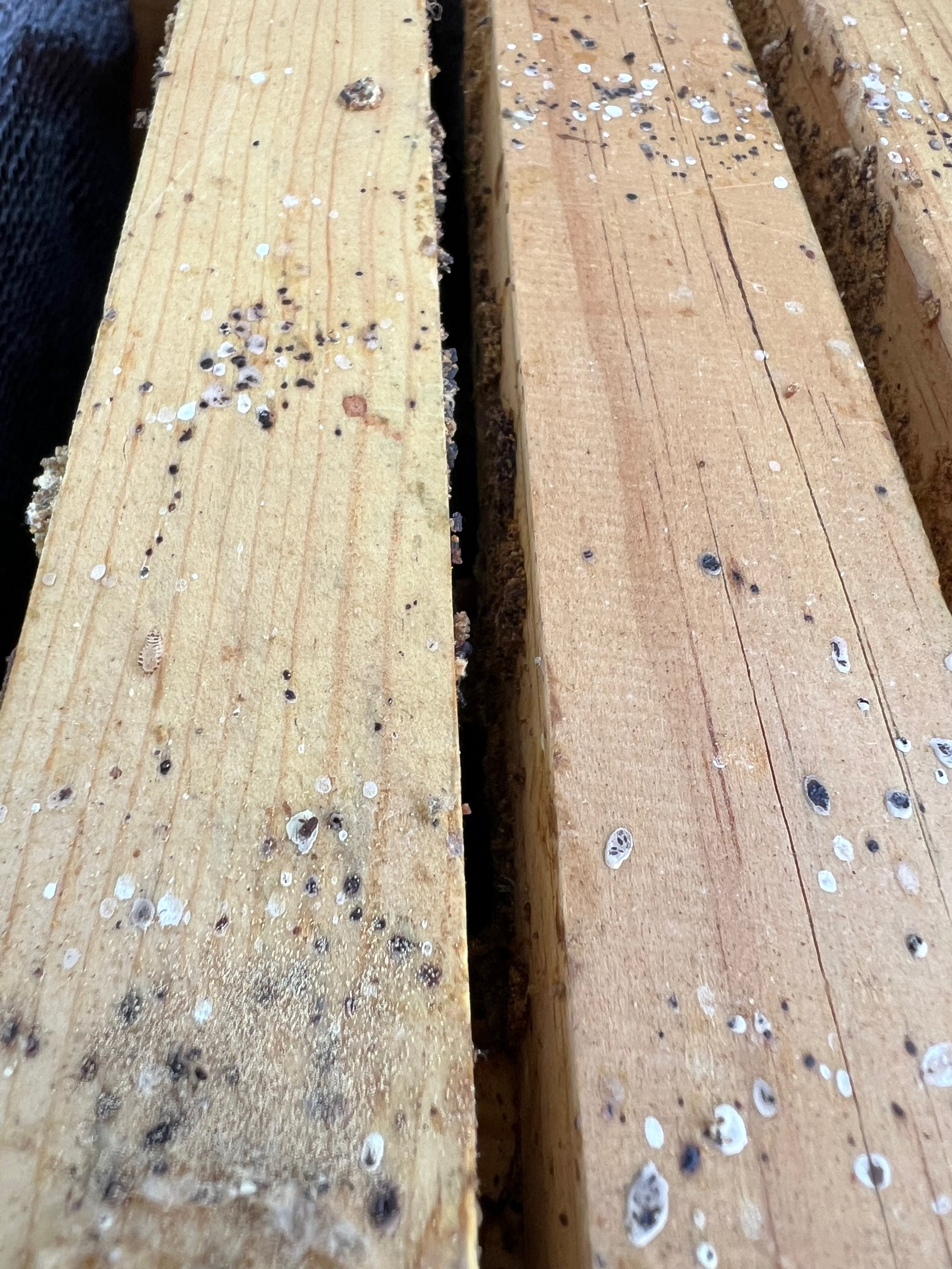Many years ago, I planted a line of three dogwoods (not our native species; rather, Cornus sanguinea) just outside our front porch. This is the part of the garden I call our ‘woodland’ garden, because it gets dappled shade all day from our mature trees. I have a lot of natives here (various Ribes, spice bush, coffee berries, etc, as well as some true geraniums, things that can handle dry shade). I wanted the dogwoods because of their bright red stems, but I haven’t been pruning them correctly I guess, because they have yet to show the flame color their name suggests.
Anyway, I can see them from our living room. Tom and I were sitting on the couch chatting yesterday and I was looking out at them and admiring the sun shining through their leaves when I realized - hang on a second, what am I seeing? - those leaves aren’t supposed to look lacy. But they do now, and for a very good reason - one that makes me super happy. They are being used to build the nests of leaf-cutter bees.
image credit: Planet Bee Foundation
Leafcutting bees (Megachilidae family) are solitary native North American bees who use soft leaves and flower petals to create nests for their young. The female bee finds a long channel or tube, for instance in wood or in a hollow stem, and painstakingly creates chambers for her larvae, depositing some bee bread (a little mound of pollen) and an egg in each one. Each chamber is separated by a wall made up of chewed leaves and mixed with resin or mud. The bees spend the winter as mature larvae in the chambers; in spring, they pupate, then chew their way out of the nest and go off to mate. The adults are active only in spring and early summer; most of their lives are spent in the cells as larvae.
We have at least 75 species of leafcutter bee in California. They are generally smaller than honeybees, tend to be more of a grayish color, and carry pollen on their bellies rather than on their legs like honeybees. They are wonderful pollinators, and in fact there is an introduced species that is a major pollinator of alfalfa and is economically important. The family Megachilidae also includes Mason bees and Wool Carder bees.
The ‘damage’ to the margins of the leaves is quite slight and doesn’t hurt the plant at all. The bees are extremely gentle and in fact, in all my years of taking pictures of bees in my garden, I’m not sure I’ve ever gotten a photo of one. I’m delighted to find this evidence of their existence in my little ecosystem and I hope I get the privilege of finally meeting one.
























